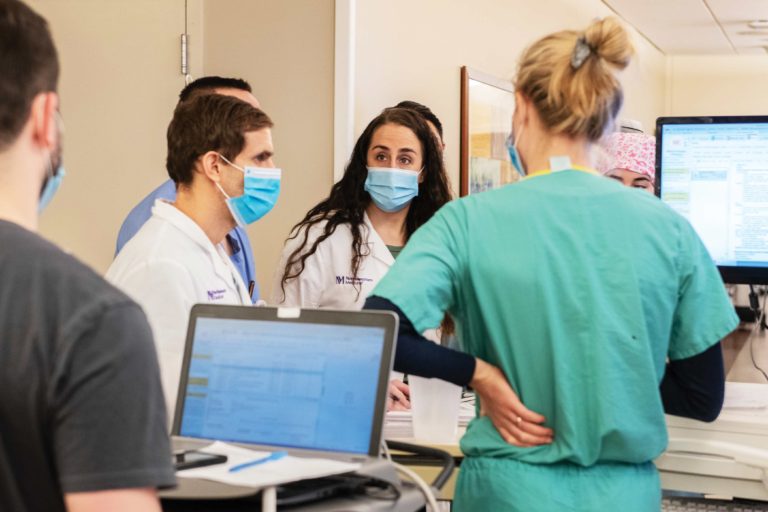It takes a team of ICU physicians, specialists, nurses and other rotating care providers to care for seriously ill patients with COVID-19, says Malsin.
The patient was fit, active and only 28 when she contracted COVID-19. But the disease conspired inside of her with a pre-existing autoimmune condition, and soon Mayra Ramirez was struggling to live. On April 26, she ended up at Northw estern Memorial Hospital in Chicago, where on June 5 she became the first known COVID-19 patient in the United States to receive a double-lung transplant.
The job of getting Ramirez well enough to survive the transplant belonged to Elizabeth Malsin, MD ’11, a 2011 Drexel College of Medicine graduate who specializes in pulmonary and critical care at Northwestern Memorial. From the time Ramirez arrived in the hospital’s COVID Intensive Care Unit until her transplant, Malsin was one of three rotating physicians who took turns as “quarterback” on her case.
“For days, she was the sickest person in our COVID ICU and possibly the entire hospital,” Malsin recalls.
At first, caring for Ramirez meant just keeping her alive while a ventilator and extracorporeal membrane oxygenation (ECMO) machine took over for her lungs and heart while her body fought the virus.
“COVID caused irreversible damage and scarring in her lungs, and her lungs weren’t getting any better,” Malsin says. “They were very stiff. If you look at them after they were explanted, they were like swiss cheese.”
In time, Ramirez cleared the virus, and her team was able to get her well enough to be considered to be a good candidate for transplant. Malsin worked with the transplant team to get her ready for the surgery, and coordinated after care. Seventy- two days later on July 8, with her breathing restored, Ramirez was able to go home.
“…some people in their 30s we can’t even get well enough to survive a transplant.”
Northwestern Memorial Hospital does about 40 to 50 lung transplants a year, and Malsin normally sees about half of these patients, she says.
As of the end of August, the hospital had done three additional COVID-19 double-lung transplants.
By then, Chicago’s summer surge had abated, and Malsin says the number of patients in their COVID Intensive Care Unit was back into the single digits.
Now, as in other parts of the country, the unit is seeing younger patients, who maybe thought that they didn’t need to worry, says Malsin, who is 35. She says that although dramatic complications are relatively rare among younger patients, she’s seen “people in their 30s that we can’t even get well enough to survive a transplant.”
It’s more likely though, she warns, that young people will pass the virus on and hurt the people they love. “Think about people other than yourself,” she says.

Elizabeth Malsin



